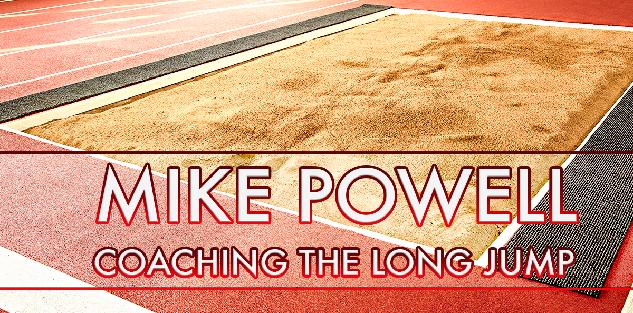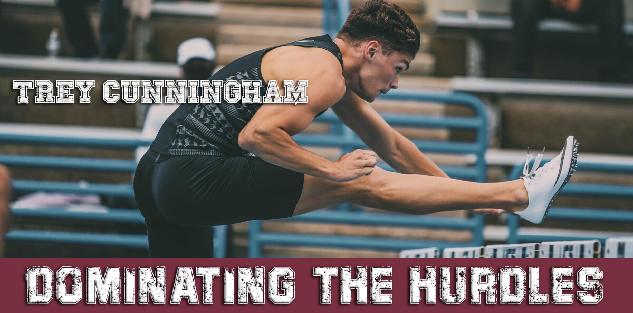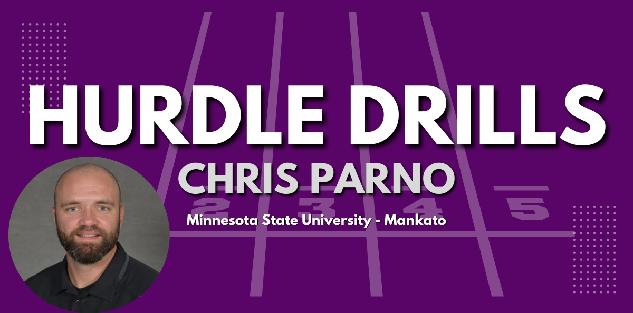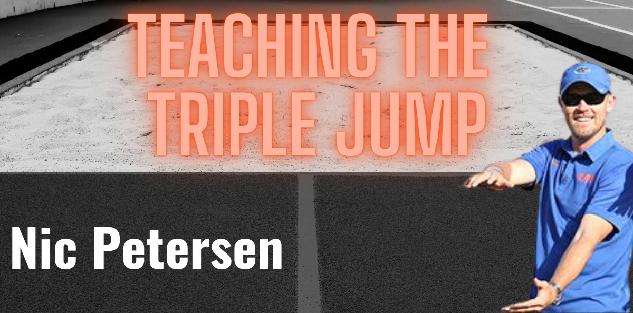Featured courses
- The Ultimate Guide to Coaching Track and Field by Jackson Chlebowy
- How TCU Coach Khadevis Robinson Builds Mental Toughness for Big 12 Track by William Markey
- Two Points of Focus When Coaching and Training Hurdles by Grant Young
- Four Keys to Maximize Winning Potential in a 400m Race by Grant Young
- Three Lessons Every Distance Running Coach Should Know by Grant Young
- Olympic Medalist Jasmine Moore’s Triple Jump Approach Technique Keys by Grant Young
- Build Strong Triple Jump Foundations with 3 Key Drills by William Markey
- Two Cues to Help With Track and Field Relay Handoffs by Grant Young
- Four Shot Put Drills to Help Develop Your Athletes by Grant Young
- Three Training Tips For Coaching 400m Runners by Grant Young
- Four Tips for Teaching the Javelin Throw by Grant Young
- 3 Pole Vault Check Points From Legendary Kansas Coach Tom Hays by Grant Young
- Two Valuable Hammer Throw Training Tips by Grant Young
- 3 Must-Try Offseason Shot Put Drills by William Markey
- Four Essential Tips For Coaching Track Relays and Sprints by Grant Young
- Florida Gators Coach Nic Petersen’s Two Keys for Teaching the Triple Jump by Grant Young
- Three Effective Drills for Improving the Long Jump by Grant Young
- Three Drills for Sprinters That Track Coaches Swear By by Grant Young
- Four Pole Vault Drills All Track and Field Coaches Should Know by Grant Young
- Explosive Track and Field Training to Level Up This Summer by Tyler Rathke
- Throwing Secrets: The Entry by Tyler Rathke
- How to Find an Endurance Athlete’s Proper Training Pace by Grant Young
- The Technique Behind Mykolas Alekna’s Discus World Record by Grant Young
- How to Build a Sprinter's Training Regimen by Grant Young
- How to Teach the Glide Shot Put by Grant Young
- Three Hurdle Drills All Track Coaches Should Know by Grant Young
- How Distance Running Coaches Can Get the Most Out of Their Athletes by Grant Young
- The Technique Behind Mondo Duplantis' Pole Vault World Record by Grant Young
- How to Coach Weightlifting For Increased Speed and Acceleration by Grant Young

Florida Gators Coach Nic Petersen’s Two Keys for Teaching the Triple Jump
- By Grant Young
Track and field coaches that are triple jump training to youth, high school, and college athletes can be particularly challenging due to the event's inherent complexity.
The triple jump consists of three distinct phases: the hop, step, and jump, each requiring specific techniques and precise timing. Coaches must ensure that athletes can execute these phases smoothly while maintaining speed and momentum, which can be daunting for those inexperienced in the event.
Additionally, mastering the triple jump demands a combination of strength, power, and coordination. Athletes often come with varying levels of physical ability, making it essential for coaches to tailor training programs accordingly. This individualized approach can be time-consuming, especially in a team setting. Moreover, the psychological aspect cannot be overlooked. The fear of failure or injury may deter athletes from fully committing to their training or attempting new techniques.
Establishing confidence in athletes is crucial, but it often takes time and patient encouragement. Limited resources and facilities can further complicate coaching efforts. Effective instruction requires a thorough understanding of these challenges and a commitment to supporting each athlete’s development.
Due to this difficulty, it’s imperative that track and field have a few key points and techniques they can rely on that will help athletes of all levels. And there are few coaches better to learn from than Nic Petersen.
Coach Petersen is entering his 3rd season as Associate Head Coach (and 12th season as any coach) of Jumps at the University of Florida Gators track and field program, and has made his own imprint on one of the nation’s historically elite jumps programs.
The Gators have continued their extraordinary run of success in the jumps under Petersen. The program has recorded 21 men’s and women’s individual NCAA titles since his arrival in 2013, including seven from Jasmine Moore (2022-2023), two from Yanis David in 2019, three from KeAndre Bates in 2017 and seven from Marquis Dendy (2012-2015).
Petersen has been a part of nine National Championship teams and seven SEC Championship teams since his arrival to the program. During his tenure, Petersen’s jumps group has won 21 National Championships and 28 SEC Championships.
In his ‘Teaching the Triple Jump’ course, Coach Petersen goes over the teaching of triple jump from the ground up. Topics covered include his teaching progression for triple jump, training inventory, runway drills, 1st run jump drills, short run drills, and extended or specific bounding drills.
We have pulled two of his most crucial lessons about teaching the triple jump and have provided them for you below.
Addressing Common Errors
Perhaps the most important part of Coach Petersen’s course comes at the end when he addresses some of the most common errors that arise in triple jump athletes.
The first error he discusses is athletes reaching or hopping into the board. This could either be reaching into the board, the athlete sticking their foot out into the board, setting up too much as they make their entry into the board, decelerating into it, and just overall making sure athletes are maintaining their proper mechanics and not developing any bad habits as they get into and execute their take off are all things coaches should be constantly looking out for.
An athlete having a low knee drive or taking their hop too high are also things coaches want to key in on.
In addition to this, Coach Petersen notes that most issues that arise for an athlete during their triple jump are the result of something incorrectly done earlier on in their jumping process. Therefore, Coach Petersen stresses what he calls “coaching backward”.
To show what this means, he discusses how errors from the hop are normally from something that happened in the run and errors from the step are normally from something that happened in the hop.
“Look for things that happened before [the error]. What caused that?” Whatever the error is might have nothing to do with that actual phase and instead have everything to do with what they did heading into that phase.
Gator Drill
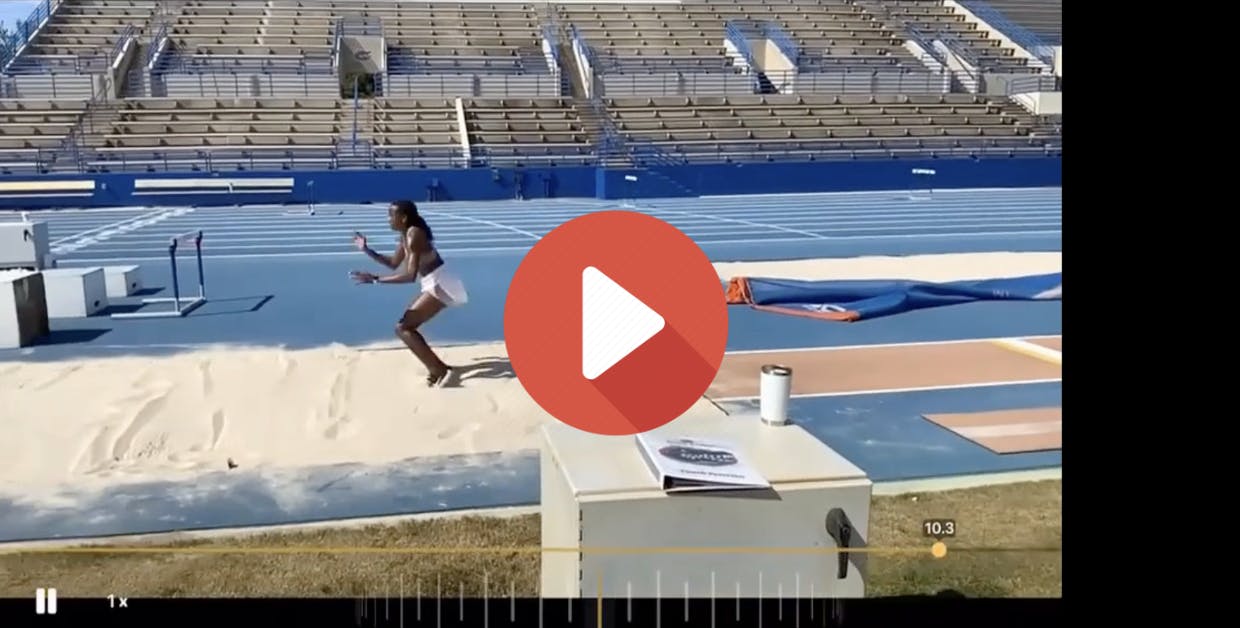
The triple jump drill that Coach Petersen is most known for is called the Gator Drill, which has multiple variations that can be customized and catered to specific athletes.
The most basic iteration of this starts with an athlete either on flat ground or on a raised box. They’ll begin by taking their first jump with their right leg, their second jump with their right leg, and then their final jump with their left leg before getting into their actual leap.
This is a great drill for coaches to diagnose and pinpoint the specific areas where an athlete is excelling or needs improvement. Especially by having these drills on video, Coach Petersen can look back at these repetitions with the athletes and work through various aspects of it in detail, such as ground contact at each phase of the foot position upon landing.
Coach Petersen suggests instituting a small box (anywhere from 1 to 6 inches) at the beginning of the drill only if you’re working with high-level athletes because the drill is already difficult enough in itself.

